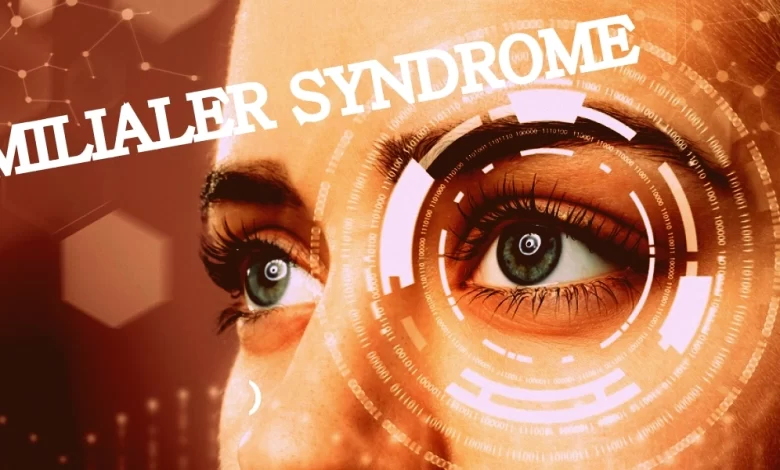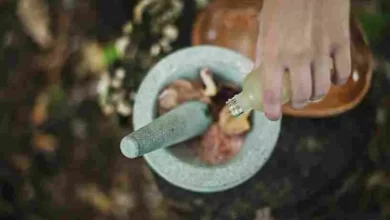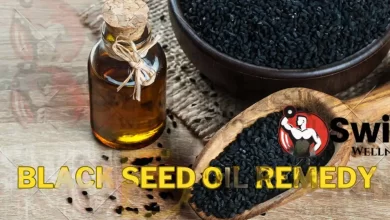The Ultimate Guide to Mastering Milialar: Tips, Tricks, and Strategies

Welcome to the ultimate guide on how to master Milialar! If you’ve ever experienced those pesky little bumps on your skin, then this article is for you. Whether you’re a newborn, an adult, or somewhere in between, understanding Milialar and its impact on your skin is essential. From uncovering the causes and symptoms to exploring effective treatments and prevention methods, we’ve got you covered. So grab a cup of tea (or your preferred beverage) and get ready to dive into the world of Milialar – because healthy skin awaits!
What is Milialar and how does it affect the skin?
Milialar, also known as milia, is a common skin condition that affects people of all ages. It manifests as small white or yellowish bumps on the surface of the skin, typically around the face and eyes. These tiny cysts occur when dead skin cells get trapped beneath the surface, leading to blockage of pores.
So how exactly does Milialar affect the skin? Well, these tiny bumps can be unsightly and may make you self-conscious about your appearance. They are often mistaken for acne or pimples but differ in their cause and treatment.
One thing to note is that Milialar is usually harmless and painless. However, if left untreated, it can persist for months or even years. The good news is that with proper care and treatment, you can effectively manage this condition and restore smoothness to your skin.
It’s important not to try popping or squeezing Milialar yourself as this can lead to further irritation or infection. Instead, seek professional help from a dermatologist who can provide safe extraction methods.
Remember that each person’s experience with Milialar may vary – some individuals may only have a few isolated bumps while others may have clusters of them. Understanding how it affects your own skin will help guide you towards finding suitable treatments and prevention strategies.
Stay tuned as we dive deeper into understanding the symptoms, causes, types of Milialar!
Understanding the symptoms and appearance of Milialar
Understanding the symptoms and appearance of Milialar is crucial for effectively managing this common skin condition. Milialar, also known as milia, presents itself as small white or yellowish bumps on the skin. These bumps are typically tiny cysts filled with keratin, a protein found in the outer layers of the skin.
The most common areas affected by milia include the face, particularly around the eyes and cheeks. However, they can also develop on other parts of the body such as arms, legs, and torso. Milia may appear individually or in clusters and can range in size from pinheads to small peas.
Unlike acne or pimples, milia do not have inflammation or redness associated with them. They are generally painless and do not itch or cause discomfort unless irritated.
Milia can occur at any age but are more commonly seen in newborns and infants due to their underdeveloped sweat glands. In adults, milia can be caused by factors such as sun damage, excessive use of heavy skincare products that clog pores, hormonal changes, genetic predisposition, or certain medical conditions like blistering disorders.
If you notice these characteristic white bumps on your skin that persist despite proper hygiene practices and regular exfoliation routines; it’s important to consult a dermatologist for an accurate diagnosis and treatment plan tailored specifically to your needs.
Remember that understanding how milia manifests itself is just one piece of the puzzle – stay tuned for our next section where we delve into unraveling its causes!
Unraveling the causes of Milialar
Milialar is a common skin condition that affects people of all ages, from newborns to adults. While it may seem like a pesky problem, understanding its underlying causes can help us effectively manage and prevent its occurrence.
One of the main causes of milialar is an overproduction of keratin, a protein found in the outer layer of our skin. When excess keratin becomes trapped beneath the surface, small white or yellowish bumps known as milia form. This can happen due to various factors such as hormonal changes, certain medications, or even prolonged sun exposure.
Another possible cause is inadequate exfoliation. If dead skin cells are not properly sloughed off, they can accumulate and block the pores, leading to milia formation. Additionally, using heavy skincare products or cosmetics that clog the pores can contribute to this condition.
Furthermore, genetics may play a role in determining who is more prone to developing milia. If your parents or close relatives have had this condition before, you might be at a higher risk too.
Understanding these potential triggers for milia allows us to take proactive measures in managing and preventing its occurrence. By adopting good skincare practices such as regular exfoliation with gentle scrubs or chemical peels and avoiding heavy pore-clogging products we can keep our skin healthy and minimize the chances of milialar flare-ups.
Remember that each individual’s experience with milia may differ slightly depending on their unique circumstances and genetic makeup. Therefore it’s always best to consult with a dermatologist for personalized advice on how to tackle this stubborn skin issue.
Exploring the different types of Milialar
Milialar, also known as milia, is a common skin condition that affects people of all ages. However, did you know that there are different types of milia? Understanding these variations can help you better identify and manage this pesky skin issue.
1. Primary Milia: This type of milia occurs when dead skin cells become trapped in small pockets on the surface of the skin. It typically appears as tiny white or yellowish bumps around the eyes, cheeks, and forehead.
2. Secondary Milia: Unlike primary milia, secondary milia develops due to an underlying skin condition or trauma to the skin. Common causes include burns, blistering disorders, and long-term use of certain topical creams or ointments.
3. Neonatal Milia: As the name suggests, neonatal milia is commonly seen in newborns and infants. These small white bumps often appear on their noses but usually disappear on their own within a few weeks.
4. Juvenile Milia: This type primarily affects young children and teenagers who have experienced sun damage or have genetic predispositions to developing milialar conditions.
5. Multiple Eruptive Milium: This rare form manifests as numerous small cysts grouped together in specific areas such as the face and upper arms.
Each type may require slightly different treatment approaches depending on its underlying cause and severity level. Consulting with a dermatologist will help determine which course of action is best for your specific situation!
Remember—knowledge is power when it comes to managing your skincare concerns! Stay tuned for more insights into mastering miliaral in our upcoming blog posts!
Diagnosing Milialar: How is it done?
When it comes to diagnosing Milialar, healthcare professionals rely on a combination of factors. The first step involves a thorough examination of the affected skin areas. Doctors will carefully observe and assess the appearance and texture of the bumps or cysts present.
In some cases, a simple visual inspection may be sufficient for diagnosis. However, if there is any uncertainty or suspicion of another condition, additional tests may be recommended. These could include skin biopsies or laboratory analysis.
During a biopsy, a small sample of tissue is taken from the affected area and examined under a microscope. This can help confirm whether the lesions are indeed milia or if another underlying cause may be responsible.
Furthermore, doctors might also inquire about the patient’s medical history and any recent changes in skincare products or routines that could potentially contribute to milia formation.
Obtaining an accurate diagnosis for Milialar requires careful evaluation by trained medical professionals who take into account various factors such as physical examination findings, patient history, and possibly laboratory testing. By accurately diagnosing this condition, appropriate treatment plans can be established to effectively manage milia and promote healthy skin.
Effective treatments for Milialar
Effective treatments for Milialar can help clear up the condition and improve the appearance of your skin. There are several options to consider, depending on the severity of your milia and your individual needs.
One commonly used treatment is manual extraction. This involves using a sterile needle or lancet to carefully puncture each milium and remove its contents. This should only be done by a trained professional to avoid infection or scarring.
Another option is chemical peels, which use acids such as glycolic acid or salicylic acid to exfoliate the skin and unclog pores. Chemical peels can help slough off dead skin cells, allowing trapped keratin to be released.
Topical retinoids may also be prescribed by a dermatologist for treating milia. Retinoids work by promoting cell turnover and preventing clogged pores, helping to reduce the formation of new milia.
In some cases, laser therapy may be recommended to remove stubborn milia. Laser treatment uses focused light energy to target and destroy the cysts without damaging surrounding tissue.
It’s important to note that these treatments may require multiple sessions before results are achieved. To determine which treatment is best for you, it’s essential to consult with a dermatologist who can assess your specific situation and provide personalized recommendations.
Remember that prevention is key in managing milia recurrence after treatment. Regular exfoliation with gentle scrubs or chemical exfoliants can help keep pores clear and prevent new cysts from forming. Additionally, maintaining a consistent skincare routine that includes non-comedogenic products can minimize pore blockage.
What is the outlook for Milialar?
The outlook for Milialar can vary depending on the individual and the severity of their condition. In many cases, Milialar is a benign skin condition that does not cause any long-term health problems. It is typically considered to be a cosmetic concern rather than a medical one.
For those who are bothered by the appearance of Milialar, there are effective treatments available. Dermatologists can often remove milia through techniques such as extraction or laser therapy. These procedures are generally safe and well-tolerated.
It’s important to note that although treatment can help improve the appearance of existing milia, it may not prevent new ones from forming in the future. However, with proper skincare practices and regular exfoliation, individuals can minimize their risk of developing new milia.
While Milialar can be frustrating and aesthetically displeasing for some people, it is generally a manageable condition with several treatment options available. By working closely with a dermatologist and following an appropriate skincare routine, individuals can achieve healthier-looking skin free from milia.
Milialar in newborns and infants
Milialar in newborns and infants can be a common occurrence, often causing concern for parents. These tiny white bumps may appear on the baby’s face, especially around the nose, cheeks, and chin. While they are harmless and typically resolve on their own within a few weeks or months, it’s natural to want to understand more about them.
One of the main reasons milia occur in newborns is due to underdeveloped oil glands. These small cysts form when dead skin cells become trapped near the surface of the skin instead of being shed properly. Despite their appearance, milia do not cause any discomfort or itching for babies.
It’s important to note that milia can also develop in older children and adults. However, in these cases, there may be other underlying causes such as excessive sun exposure or certain skin conditions like rosacea.
If you’re concerned about your baby’s milia or if they persist beyond several months, it’s best to consult with a pediatrician or dermatologist who can provide guidance and reassurance. It’s always better to err on the side of caution when it comes to your little one’s delicate skin.
Remember that prevention is key when dealing with milia in newborns and infants. Be gentle while cleansing their faces using mild products specifically formulated for babies’ sensitive skin. Avoid applying heavy creams or oils that might clog their pores further.
While it may be tempting to try home remedies on your baby’s delicate skin, experts recommend against doing so without professional advice. Instead of attempting DIY treatments at home, focus on practicing good skincare habits by keeping your baby clean with regular bathing routines using mild cleansers recommended by healthcare professionals.
In conclusion (without explicitly stating), understanding milialar in newborns and infants is crucial for parents seeking reassurance about this common condition affecting their little ones’ delicate skin.
Milialar in older children and adults
Milialar, a skin condition characterized by tiny white bumps, can affect individuals of all ages. While it is commonly associated with newborns and infants, milia can also occur in older children and adults.
In older children, milia often appears on the face, especially around the eyes and cheeks. These small cysts may be more noticeable due to increased oil production during puberty. For adults, milia can occur anywhere on the body but are most commonly found on the face.
The causes of milia in older children and adults are similar to those in infants: trapped dead skin cells or keratin build-up that blocks hair follicles. Factors like sun damage, certain medications or cosmetics containing heavy oils can also contribute to its development.
Treatment options for milia in older children and adults vary depending on severity. Gentle exfoliation using mild scrubs or chemical peels may help remove dead skin cells and unclog pores. In some cases, professional extraction by a dermatologist may be necessary.
Prevention is essential for managing milia in both children and adults alike. Using non-comedogenic skincare products that won’t clog pores is crucial. Regular cleansing routines should be followed, along with gentle exfoliation to prevent excessive buildup of dead skin cells.
While natural home remedies like honey masks or oatmeal scrubs might offer temporary relief from symptoms, it’s important to consult with a healthcare professional for proper diagnosis and treatment recommendations.
Milia in older children and adults can be an annoying cosmetic concern but take comfort knowing there are various strategies available for managing this common condition effectively!
Incorporating Milialar prevention into your skincare routine
Incorporating Milialar prevention into your skincare routine is essential for maintaining healthy and clear skin. By taking proactive steps, you can minimize the occurrence of these stubborn little bumps and keep your complexion looking smooth and radiant.
One important aspect of prevention is proper cleansing. Make sure to cleanse your face twice a day with a gentle cleanser that is suitable for your skin type. This will help remove dirt, oil, and dead skin cells that can contribute to clogged pores.
Exfoliation is also key in preventing Milialar. Regularly exfoliating helps slough off dead skin cells on the surface of the skin, preventing them from becoming trapped in the pores. However, be cautious not to over-exfoliate as this can irritate the skin and lead to further problems.
When choosing skincare products, opt for non-comedogenic formulations. These are specifically designed not to clog pores or cause breakouts. Look for labels that indicate “non-comedogenic” or “oil-free” to ensure you’re using products that won’t exacerbate Milialar.
Moisturizing is another crucial step in preventing Milialar formation. Choose a lightweight moisturizer that suits your skin’s needs without being too heavy or greasy. Keeping your skin properly hydrated will help maintain its natural balance and reduce the likelihood of pore blockages.
Consider incorporating topical treatments containing ingredients like salicylic acid or retinoids into your skincare routine under professional guidance if needed . These ingredients have been found effective in unclogging pores and promoting healthy cell turnover.
By following these preventive measures consistently as part of your daily skincare routine, you can significantly reduce the occurrence of Milialar breakouts and achieve clearer, smoother-looking skin overall!
Natural home remedies for Milialar
Natural home remedies can be a great option for managing Milialar and promoting healthier skin. Here are some tried-and-true remedies that you can try at home:
1. Gentle exfoliation: Exfoliating the affected areas with a mild scrub or gentle facial brush can help remove dead skin cells and unclog pores, reducing the appearance of Milialar.
2. Steam therapy: Steaming your face can open up blocked pores and allow trapped oil to escape. Simply fill a bowl with hot water, place your face over it (keeping a safe distance), and cover your head with a towel to trap the steam.
3. Honey mask: Honey has natural antibacterial properties that can help clear up Milialar. Apply raw honey directly onto the affected areas and leave it on for about 15 minutes before rinsing off with warm water.
4. Tea tree oil: Known for its antimicrobial properties, tea tree oil may help reduce inflammation associated with Milialar. Dilute a few drops of tea tree oil in carrier oil (such as coconut or jojoba) and apply it gently on the affected areas.
5. Aloe vera gel: Aloe vera is known for its soothing properties, making it ideal for calming irritated skin caused by Milialar. Apply fresh aloe vera gel directly to the affected area and let it dry before rinsing off.
Remember, everyone’s skin is different, so what works for one person may not work for another. It’s always best to do a patch test before applying any new remedy to ensure there are no adverse reactions.
While these natural remedies may provide relief from Milialar symptoms, they are not intended as substitutes for professional medical advice or treatment options prescribed by healthcare providers.
Frequently asked questions about Milialar
Q: Can Milialar be prevented?
A: While there is no foolproof way to prevent Milialar, you can take steps to minimize its occurrence. Keeping your skin clean and well-moisturized can help prevent the buildup of dead skin cells that can contribute to Milialar. It’s also important to avoid using heavy or occlusive skincare products that may clog your pores.
Q: Are there any natural remedies for treating Milialar at home?
A: Yes, there are a few natural remedies that may help improve the appearance of Milialar. One popular option is exfoliating with gentle scrubs or chemical exfoliants containing ingredients like salicylic acid or alpha hydroxy acids. Another approach is using warm compresses to soften the bumps before gently extracting them with a sterilized needle or comedone extractor tool.
Q: Is it safe to pop or squeeze the milia bumps myself?
A: It is generally not recommended to attempt popping or squeezing milia yourself, as this could lead to infection and scarring. If you’re concerned about the appearance of milia, it’s best to consult a dermatologist who can provide professional treatment options.
Q: How long does it take for Milialar bumps to disappear?
A: The timeline for resolving milia varies from person to person and depends on factors such as the underlying cause and individual skin characteristics. In some cases, milia may clear up on their own within weeks or months without any intervention. However, if they persist or become bothersome, seeking medical advice is advisable.
Remember, these answers serve as general guidelines and should not replace personalized advice from a healthcare professional. If you have specific concerns about your skin condition, it’s always best to consult with a dermatologist who can provide accurate diagnosis and appropriate treatment options tailored specifically for you.
Conclusion: Mastering the art of managing Milialar for healthy skin
Managing and treating Milialar can be a challenging process, but with the right knowledge and strategies, you can take control of your skin’s health. By understanding what Milialar is, its symptoms, causes, types, and diagnosis methods, you are equipped with the necessary information to tackle this condition head-on.
When it comes to treatment options for Milialar, there are several effective approaches available. From over-the-counter creams containing retinoids or alpha-hydroxy acids to professional treatments like chemical peels or microdermabrasion, you have a range of choices depending on the severity of your condition.
Prevention is always better than cure when it comes to skincare concerns like Milialar. Incorporating good skincare practices into your daily routine can help minimize the chances of developing these pesky bumps. Regularly cleaning your face with gentle cleansers and exfoliating regularly can help keep pores clear and prevent buildup.
If you prefer natural remedies, there are some home remedies that may help in reducing Milia. For example, applying warm compresses or using products containing tea tree oil or apple cider vinegar may provide relief from these stubborn bumps.
Remember that everyone’s journey with Milialar will be unique. It might take time to find the perfect combination of treatments that work best for you. Don’t hesitate to consult a dermatologist who can guide you through personalized solutions based on your specific needs.
In conclusion (without explicitly saying “In conclusion”), mastering how to manage Milialar involves arming yourself with knowledge about this condition and implementing effective prevention techniques alongside appropriate treatment strategies tailored specifically for your skin type and severity of symptoms.
By staying proactive in caring for your skin while remaining patient throughout the process, achieving healthier-looking skin free from those little white bumps is within reach!




